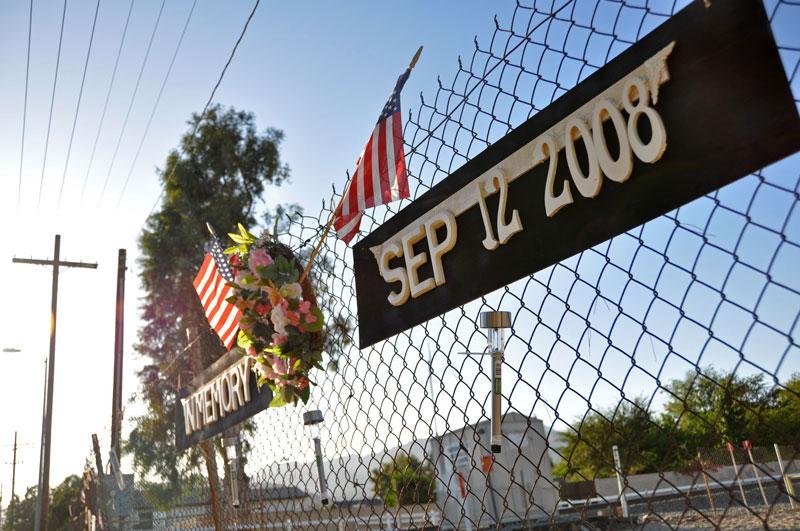
About a year ago, Eric G. Forbes sat in the second car of a Metrolink train looking through a window as another train headed toward him.
“I could see the train coming, had fewer than five seconds to do something, even though there wasn’t anything I could do,” said Forbes, CSUN’s director of Admissions and Records. “I was in complete disbelief and tried rationalizing what I was seeing but couldn’t, because I knew there wasn’t another train track and that we would crash.”
Forbes was one of many involved in the Metrolink train collision that occurred Sept. 12, 2008 resulting in the loss of 25 lives and leaving countless others, like Forbes, injured.
Even though his injuries were serious, he describes himself as “one of the fortunate ones.”
Recounting his experience that fateful day, Forbes described the seconds where he was thrown from his seat as the pressure from the collision propelled him forward as if occurring in slow motion.
“It seemed like it took forever to stop, it was like being inside a can that is being crushed. It’s strange the memories of that moment, because I was holding on to my lunch pail the entire time it was happening,” Forbes said.
“The scene after we got out of the train was terrible, it was extremely graphic. I was trying to help people, there was a lot of commotion and seeing all that metal and fire was indescribable.”
Before the paramedics could get to the scene, Forbes and his fellow passengers “invented our own authority, for what needed to be done at that moment. We were worried the ground might catch fire so we looked for fire extinguishers and tried to help as many people as we could.”
Strangers from the neighborhood came to the scene with blankets, water and chairs, trying to help as best as they could, Forbes said.
Forbes describes the response from the paramedics as exceptional. “Without the paramedics making sense of that chaotic situation it would have all been much worse,” Forbes said.
Forbes neck and leg sustained the most damage, and although he stayed in the hospital overnight, not all his injuries were immediately treated. The hospital had missed the injury to his leg that eventually became infected and needed further treatment.
One of the most surreal moments for Forbes happened after he was released from the hospital and given a ride to his car, still parked at the train station.
It was a Saturday, a day that the parking lot is usually empty. Except that day Forbes recalls seeing cars still parked there.
“They were passengers yet to return. It was strange and haunting being in that parking lot and realizing that,” Forbes said.
The injuries he sustained to his neck were the primary focus.
“It took me a long time to recover my voice completely,” Forbes said.
A week after, Forbes had returned to work.
“I stayed out a week, because in the end it was easier for me to process what had happened by being busy,” said Forbes. “There were a lot of images, energy and noise to deal with. Getting back to normal life was the best therapy for me.”
Since that Friday last semester, Forbes has not gotten back on the train.
The emotional recovery for Forbes has been gradual and he cites New Year’s Day 2009 as the moment he was able to leave what had happened to him in the past.
“I felt stronger and now with Saturday’s memorial I feel many emotions. There is a lot of anticipation of what will happen. People need to be made whole again, and for many of those involved, it will take some time,” Forbes added.
Keeping up to date with Metrolink post-crash safety updates has been important for him.
“There is a lot that needs attention, I want to see things improve,” he said.
“We need the transportation system, but we also need it to be safe and properly managed,” said Forbes. “This can’t be neglected or overpowered, we must make sure this doesn’t happen again.”




